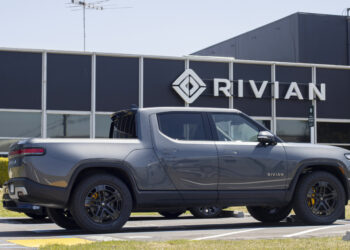Electric Vehicles and Small Crossovers Drive Optimism
General Motors (GM) posted slightly better-than-expected sales in the third quarter of 2024, despite a 2.2% year-over-year decline, reporting 659,601 vehicles sold. While the drop aligns with industry expectations of an overall sales slowdown, GM’s electric vehicles (EVs) and small crossovers provided bright spots in the quarter, signaling potential growth areas for the automaker.
Industry analysts, including Cox Automotive and Edmunds, anticipated a steeper decline for GM’s Q3 sales, projecting more than a 3% drop. GM’s results slightly outperformed these forecasts, aligning with the broader U.S. auto industry, which also saw a roughly 2% year-over-year decline.
Electric Vehicles: A Key Growth Driver
One of the primary contributors to GM’s better-than-expected performance was the significant rise in electric vehicle sales. GM reported a 60% increase in EV sales compared to the same period last year, with around 32,100 units sold during the quarter. However, while the percentage increase was impressive, EVs still only made up 4.9% of GM’s total sales volume for the quarter.
GM’s success in the EV market, albeit modest, represents a step forward in its broader electrification strategy. The automaker now holds a 9.5% share of the U.S. EV market, up by three percentage points from earlier this year. This improvement is a signal that GM’s lineup of electric vehicles, which spans a price range from $35,000 to over $300,000, is starting to gain traction with consumers.
“We are definitely outstripping the industry in terms of growth in EVs,” said Rory Harvey, GM’s president of global markets, in a statement last month. He also emphasized that GM currently has the most comprehensive lineup of EVs among U.S. automakers, positioning it to capitalize on the growing demand for electric cars in the coming years.
Cadillac Lyriq and Hummer Lead EV Sales
Among GM’s electric offerings, the Cadillac Lyriq crossover led the way with approximately 7,224 units sold in the third quarter. The luxury EV was followed by the Hummer EV, which accounted for 4,305 units, split between its pickup and SUV models. These models helped boost GM’s presence in the increasingly competitive electric vehicle market.
Despite the gains in the EV segment, GM has scaled back some of its ambitious electric vehicle targets, suggesting a more measured approach to ramping up production. However, executives remain optimistic that sales will continue to grow as the lineup expands and consumer interest rises.
Gas-Powered Small Crossovers Hold Steady
While EVs were a highlight, GM’s sales of small gas-powered crossovers also contributed positively. Models such as the Chevrolet Trax, Buick Envista, and Buick Envision saw notable year-over-year sales increases. This comes as no surprise, given the growing demand for smaller, fuel-efficient vehicles in the face of economic uncertainty and fluctuating fuel prices.
The automaker’s total sales for the year through Q3 stood at 1.95 million vehicles, down just 1% compared to the same period in 2023. Despite the slight decline, GM’s diverse lineup of both electric and gasoline-powered vehicles has allowed the company to mitigate broader market challenges and remain competitive.
External Factors Loom
While GM’s third-quarter performance was relatively solid, several external factors could impact future sales. One major unknown is the potential fallout from Hurricane Helene, which hit parts of the southern U.S. in late September. The extent of the damage and its impact on vehicle sales in the affected regions remains to be seen.
Additionally, a strike at key U.S. East Coast and Gulf Coast ports may further complicate GM’s supply chain and sales in the fourth quarter. While it’s too early to assess the full impact, disruptions at major ports could hinder the automaker’s ability to meet demand, especially for its growing EV segment.
How GM Stacks Up Against Competitors
GM is not the only automaker facing a challenging third quarter. Hyundai, for example, reported a 5% increase in total sales to 210,971 units, marking the second-best third quarter in the company’s history. Hyundai’s luxury brand, Genesis, also posted its best-ever Q3 with sales of 20,117 units, up 4% from last year.
Other major players like Toyota and Nissan experienced sales declines in the third quarter. Toyota’s sales dropped by 8%, while Nissan reported a 2.2% decline to 212,068 vehicles sold. Honda, in contrast, saw an 8% increase, selling 366,214 units during the quarter.
Looking Ahead
While GM’s third-quarter sales reflected broader industry challenges, the company remains optimistic about its future, particularly in the EV segment. With an expanding electric vehicle lineup and continued strength in small crossovers, GM is well-positioned to navigate the uncertainties of the auto market in the coming months.
As the automaker moves forward, the focus will likely remain on accelerating EV adoption, managing supply chain disruptions, and responding to consumer demand shifts as macroeconomic pressures continue to shape the industry.
You might like this article:Apple Faces Early iPhone 16 Build Cuts Amid Softening Demand











